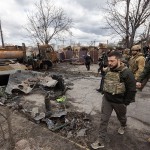An estimated 3,600 organized crime groups operate within the European Union, and they are increasingly diversifying the scope of their illicit activities, according to the EU’s Serious and Organized Crime Threat Assessment (SOCTA), released on Tuesday.
Traditional criminal activity, namely drug trafficking and money laundering, remain the most prevalent pursuits of organized crime groups, although economic crimes and fraud are “increasingly emerging as significant threats,” the report said. One
scheme that has gained popularity is called Missing Trader Intra-Community Fraud. This scheme exploits Value Added Tax (VAT) and costs EU nations at least 100 billion euros annually, according to the SOCTA report.
Criminal groups are also involved in illegal immigration, trafficking in persons, and counterfeiting. The incentive to aid illegal immigration spiked due to an increased demand for cheap labor, facilitated by the financial downturn, and the report conceded that this activity is unlikely to decrease any time soon.
Counterfeit health products are a major area of concern for EU member states, according to the report. The low risk and high profit margins associated with counterfeiting encourage organized criminal involvement, and while counterfeit medicine can cause serious health and safety concerns, societal acceptance makes tackling demand difficult.
The report cited a growing threat from new psychoactive substances, noting that while they represent a small portion of the current drug market, “lower prices, increased availability and quality” are likely to increase their prevalence. With an increasing number of drugs being produced and sold, 20 percent of the criminal groups in the EU are turning to such drug trafficking, it said.
Cannabis and cocaine are the most trafficked drugs in the EU, which has an estimated 23 million cannabis users and four million cocaine users.
The report cited a dramatic need to acknowledge the role criminal groups play in destabilizing financial markets and the region as a whole, concluding that it is important to end the myth that some organized criminal activity is victimless.


